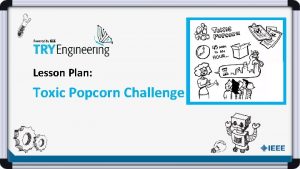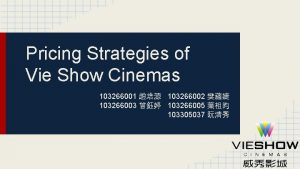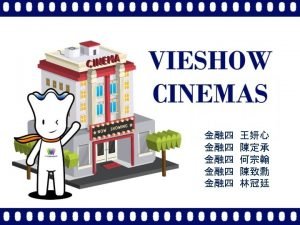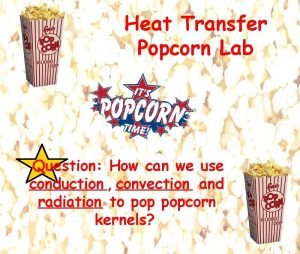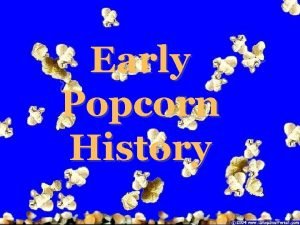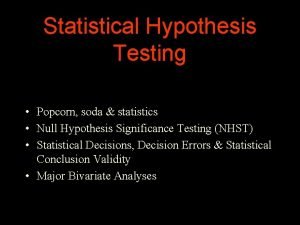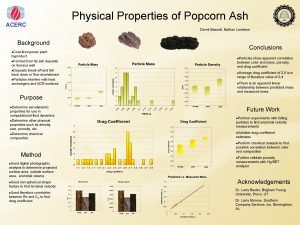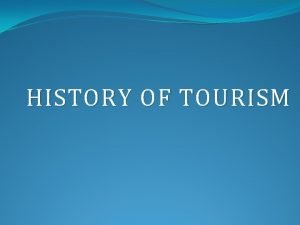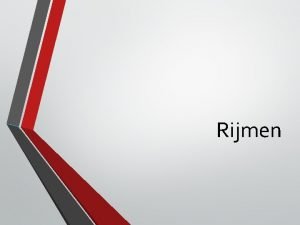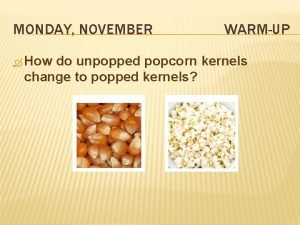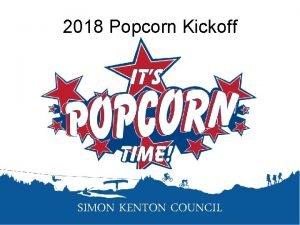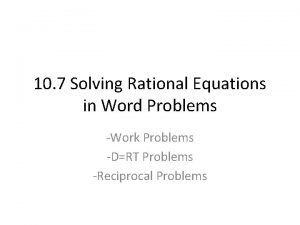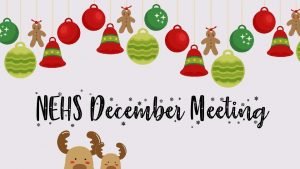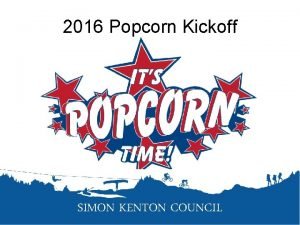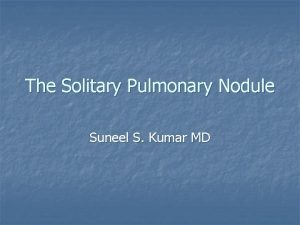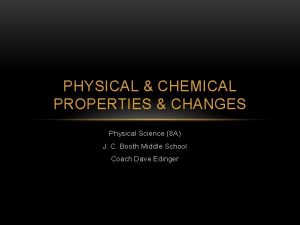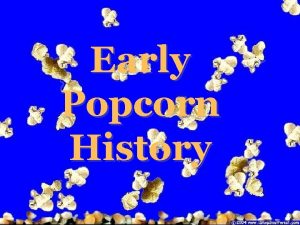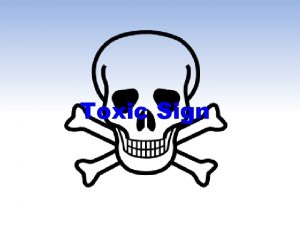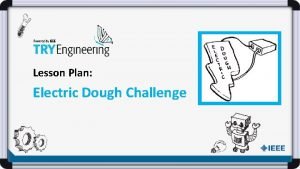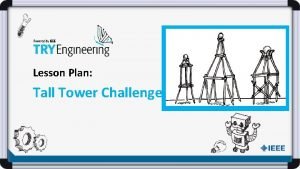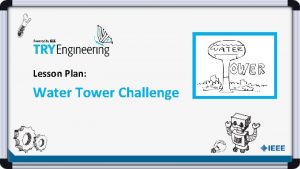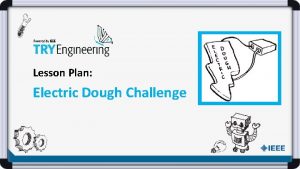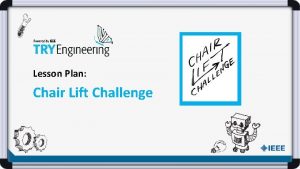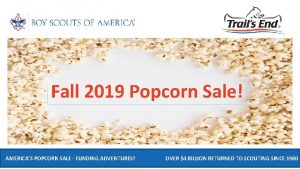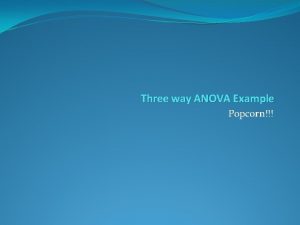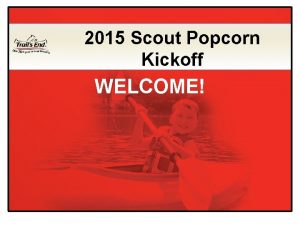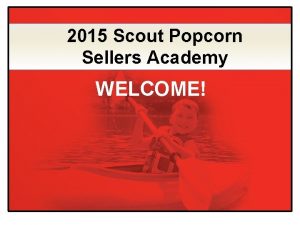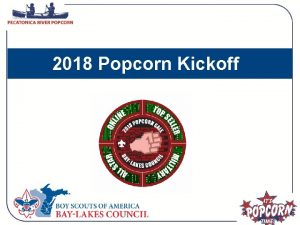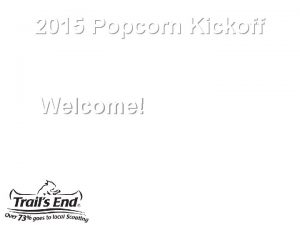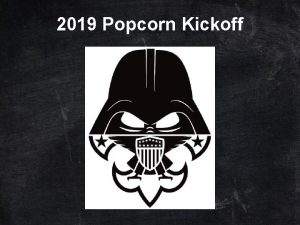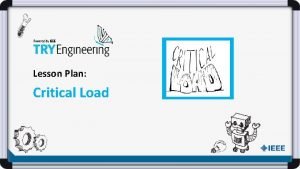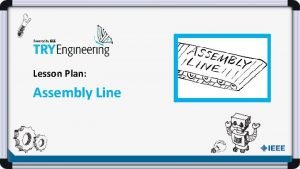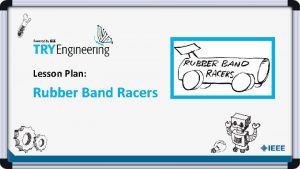Lesson Plan Toxic Popcorn Challenge RealWorld Application What
























- Slides: 24

Lesson Plan: Toxic Popcorn Challenge

Real-World Application

What is Engineering? Learn about engineering and how engineers are creative problem solvers and innovators who work to make the world a better place. Source: Teach. Engineering You. Tube Channel 3

Greatest Engineering Achievements of 20 th Century • • • Electrification Automobile Airplane Water Supply and Distribution Electronics Radio and Television Agricultural Mechanization Computers Telephone Air Conditioning and Refrigeration Source: http: //www. greatachievements. org/ • • • Highways Spacecraft Internet Imaging Household Appliances Health Technologies Petroleum/Petrochemical Technologies Laser and Fiber Optics Nuclear Technologies High-performance Material

Do you know any Engineers? • • How many engineers do you know? Your teammates? Your class? What do they do? What engineering degrees do they have? What items in your classroom and your school did engineers help design? Check out the NAE Grand Challenges for Engineering to help you learn more about how engineers make the world a better place: • NAE Grand Challenge for Engineering 5

The Design Challenge

The Design Challenge • You are a team of engineers challenged to save the city from toxic popcorn. • Toxic popcorn has contaminated a circle of approximately 4 feet in diameter. If the toxic popcorn is not transferred to a safe container within the hour, then it will contaminate and destroy an entire city. It is up to the team to save the city! 7

Criteria and Constraints • Work in teams of 4 -8 • No one may cross the plane of the circle with any part of the body • No spills are allowed, or the popcorn will explode • Use only the material provided • You have 40 min to design and test your solution • The popcorn and containers cannot cross the plane of the circle (only the ropes & tire tube may cross) 8

Toxic Popcorn Material • Each Team Needs: • 60 feet of clothesline (cut into 8 pieces) • 1 bicycle tire tube 18”- 22” diameter • One full set for actual toxic zone: • • 2 containers (32 oz) Popcorn kernels (16 oz) Round plastic table cover Timer (countdown clock) 9

Dig Deeper

Vocabulary • Technology: Any product or process that is designed by people to solve a problem. • Engineers: Inventors and problem-solvers of the world. Twenty-five major specialties are recognized in engineering (see infographic). • Engineering Design Process (EDP): Process engineers use to solve problems. • Engineering Habits of Mind (EHM): Six unique ways that engineers think. • Criteria: Conditions that the design must satisfy like its overall size, etc. • Constraints: Limitations with material, time, size of team, etc. 11

Vocabulary • • Prototype: A working model of the solution to be tested. Iteration: Test & redesign is one iteration. Repeat (multiple iterations). Tension: A pull force. Tension is the opposite of compression. Compression: A push force. Compression is the opposite of tension. 12

Engineering Design Process

The Engineering Design Process Learn about the engineering design process (EDP). The process engineers use to solve problems. Source: Teach. Engineering You. Tube Channel 14

Engineering Design Process • Divide into teams • Review the challenge and criteria & constraints • Brainstorm possible solutions (sketch while you brainstorm!) • Choose best solution and build a prototype • Test then redesign until solution is optimized • Reflect as a team and debrief as a class 15

Productive Failure • The engineering design process involves productive failure: test, fail, redesign. Iterate again and again until you have the best possible solution. • It is important to document iterations to keep track of each redesign. Use the engineering notebook to sketch ideas, document iterations and any measurement and/or calculations. • It’s also important to showcase the fact that there can be multiple solutions to the same problem. There’s no one “right” solution.

Consider. . . Before you get started brainstorming. . . consider the following. . . • What is a tire tube made of? How might you use it to lift and control the bucket of popcorn kernels? • Product and Process: teams need to create the device to lift the bucket and also the process of how to tip the popcorn kernels into the decontamination bucket. • Testing: How will you test your device and process? Be resourceful with items you have in your room. What can you use for the buckets and what might weigh about the same as the popcorn kernels? • Who will do what roles? How will you communicate while implementing your process?

Engineering Fields

Related Engineering Fields • There are many different types of engineering fields that involve designing products and processes. Here are just some of the related engineering fields. • Mechanical Engineering • Environmental Engineering • Industrial Engineering • Download the Engineering Fields Infographic How will YOU change the world? 19

Engineering Habits of Mind (EHM) • EHM is about how engineers think everyday. The core of the engineering mind is about making things that work and making them work better. • Systems thinking: Seeing whole systems and parts and how they connect. • Problem-finding: identifying and defining a problem. • Visualising: manipulating materials and sketching. Mental rehearsal of practical design solutions Source: B. Lucas and J. Hanson, Thinking Like an Engineer: Using Engineering Habits of Mind and Signature Pedagogies to Redesign Engineering Education. (International Journal of Engineering Pedagogy, Vol 6, No. 2 (2016): https: //online-journals. org/index. php/i-jep/article/view/5366 )

Engineering Habits of Mind (EHM) • Improving: Persistently trying to make things better by experimenting, designing, sketching, and prototyping • Creative problem-solving: generating ideas and solutions with others with many iterations. • Adapting: Testing, analysing, reflecting, & rethinking Source: B. Lucas and J. Hanson, Thinking Like an Engineer: Using Engineering Habits of Mind and Signature Pedagogies to Redesign Engineering Education. (International Journal of Engineering Pedagogy, Vol 6, No. 2 (2016): https: //online-journals. org/index. php/i-jep/article/view/5366 )

Reflection & Debrief

Reflection Did your solution save the city? If not, why? What would you change? What went well? What didn’t go well? What is your favorite step in the engineering design process and why? • What is your favorite design element and why? • If you had time to redesign, what changes would you make? • • • 23

For more engineering lesson plans and resources like games, engineering careers, and STEM opportunities visit IEEE’s Try. Engineering. org
 Popcorn lesson plans
Popcorn lesson plans Realworld systems
Realworld systems Define micro lesson
Define micro lesson Toxic reactions chemical equations
Toxic reactions chemical equations Teen challenge nottingham
Teen challenge nottingham St. louis
St. louis Mrs weinstein's popcorn
Mrs weinstein's popcorn Popcorn pricing strategy
Popcorn pricing strategy Pricing strategy conclusion
Pricing strategy conclusion How can popcorn be made using conduction?
How can popcorn be made using conduction? Oats glycemic index
Oats glycemic index History of microwave popcorn
History of microwave popcorn Popcorn hypothesis
Popcorn hypothesis Physical properties of popcorn
Physical properties of popcorn Nelar
Nelar It was introduced by thomas cook in 1867
It was introduced by thomas cook in 1867 Wat is slagrijm
Wat is slagrijm Warm up popcorn
Warm up popcorn Simon kenton council
Simon kenton council Word problems with rational equations
Word problems with rational equations Subjects and predicates
Subjects and predicates Popcorn
Popcorn Simon kenton council
Simon kenton council Popcorn calcification
Popcorn calcification Is separating sand from gravel physical or chemical
Is separating sand from gravel physical or chemical
